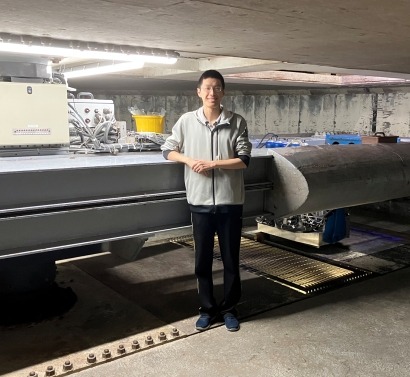
Diarmid's investigations are building on research showing that the rocks dumped around monopile offshore wind turbine foundations to protect them from erosion, can sink during earthquakes. To make sure turbines remain protected, it is important to understand how much rock is lost.
"During an earthquake, the sand around the monopiles liquefies, which we call seismic liquefication" explains Diarmid. "When this happens the sand loses its strength, causing the rocks that are used to prevent erosion, or scour, around wind farm foundations to sink. Sometimes over half the rock protection disappears."
In early investigations, it seems that the weight of the rock doesn't make a difference to how far it sinks, but the size of the rock does, a conundrum he is hoping to solve when he analyzes the results.
Wind farms are already being built in earthquake-prone zones, and more are due to be built, so the urgency of solving this problem is growing. At the moment, the only solution for remediation is to send out a team on a boat to check every single foundation and decide whether it's salvageable. With hundreds of turbines in the average wind farm, this is an expensive and time-consuming process.
"I hope that my work will make it easier to be able to model the effects on wind farms during an earthquake," says Diarmid, "and, of course, I hope it will make scour protection in earthquake-prone zones more effective in the first place.
"I'm using geotechnical centrifuge testing where we take a known foundation and shrink it down 100 times to create a model that fits on a desk. The model is loaded onto a giant centrifuge – we have one underground here in Cambridge – where we can accurately represent what would happen to a real life structure by conducting testing at 100 times earth's gravity."
Diarmid, who recently won the British Geotechnical Association's Cooling Prize for this work, is expecting the results of the study to be available next year. The project is funded by HR Wallingford and EPSRC, with a collaboration between Dr John Harris and Prof Richard Whitehouse of HR Wallingford, and Prof Gopal Madabhushi of Cambridge University.

